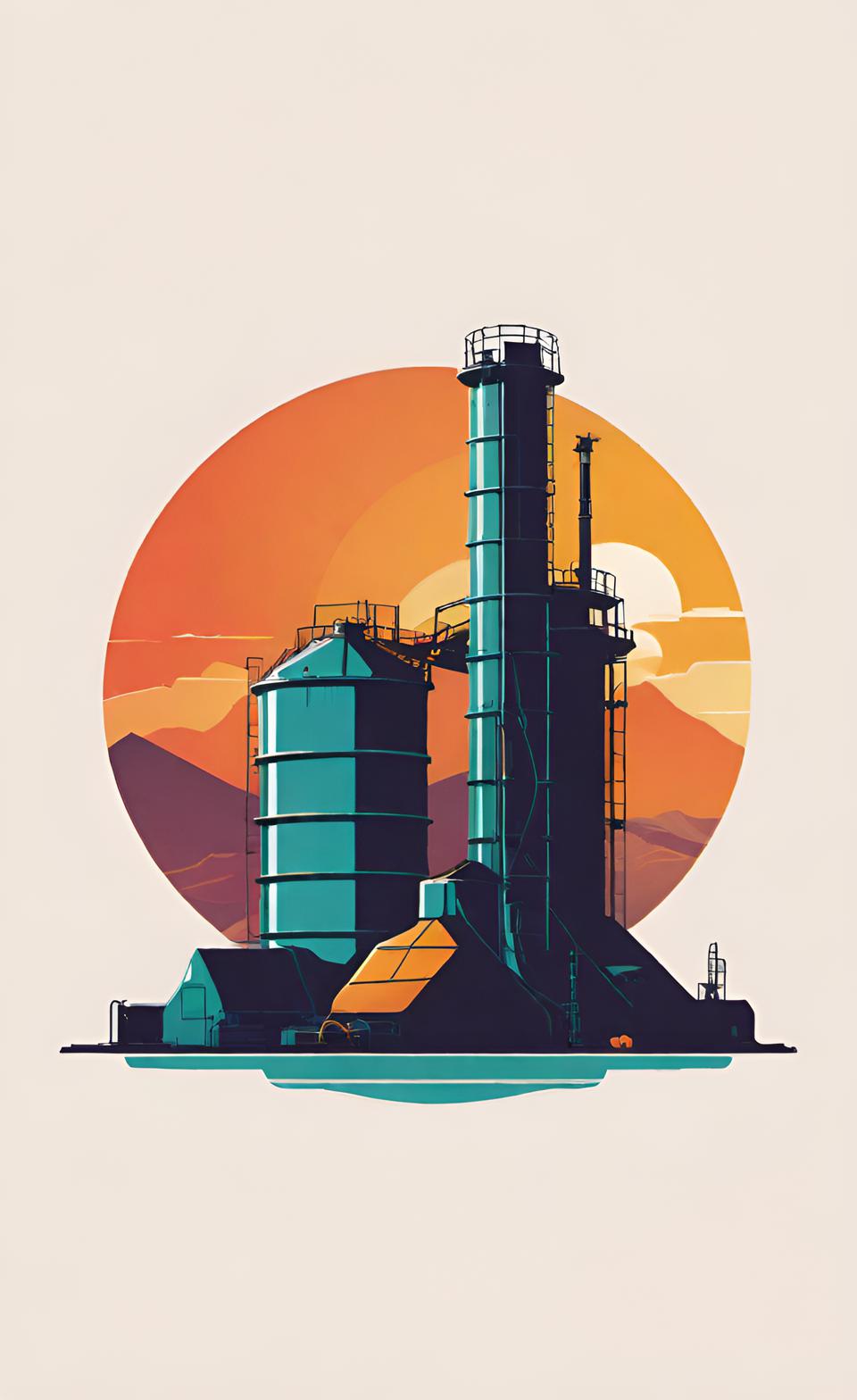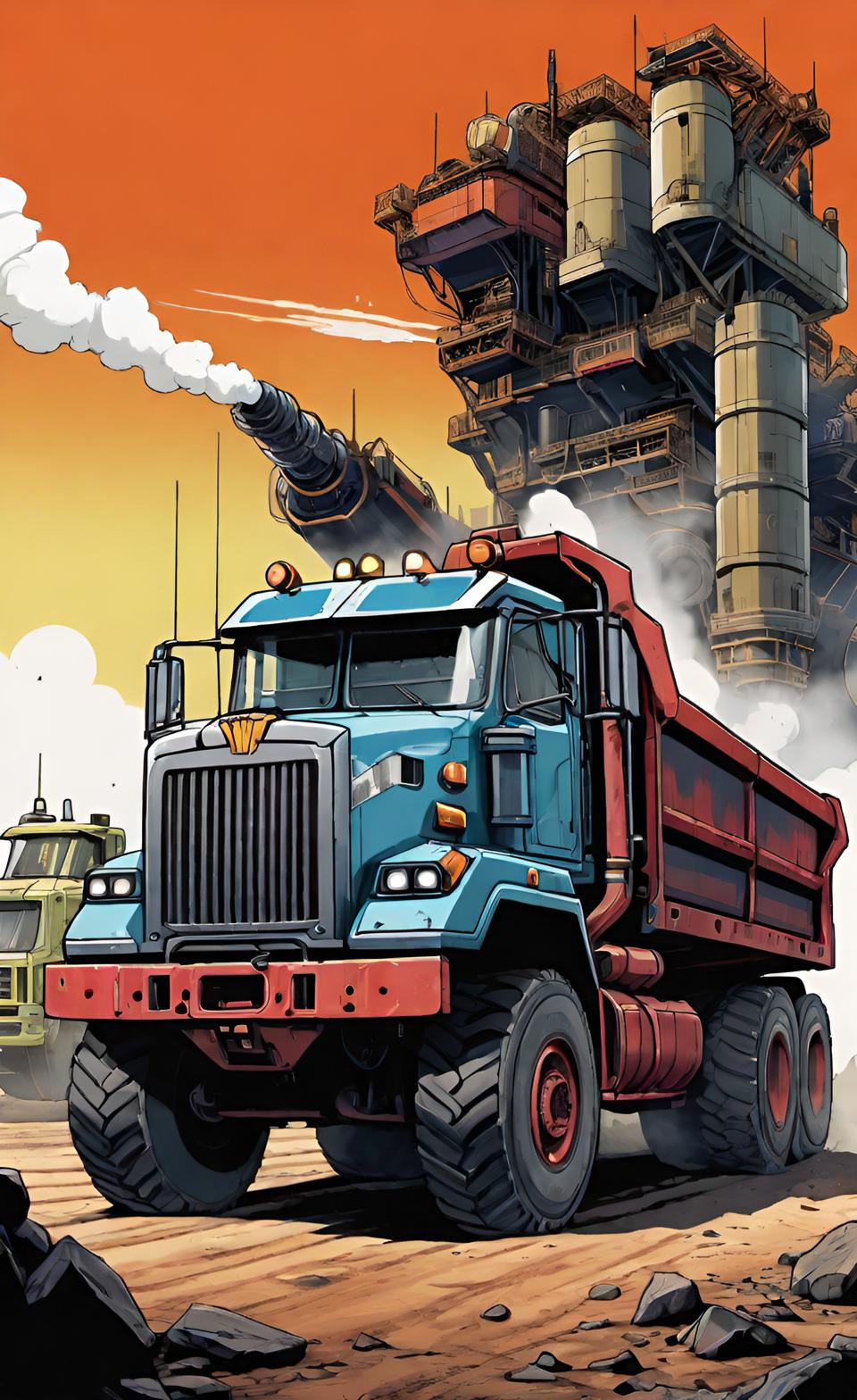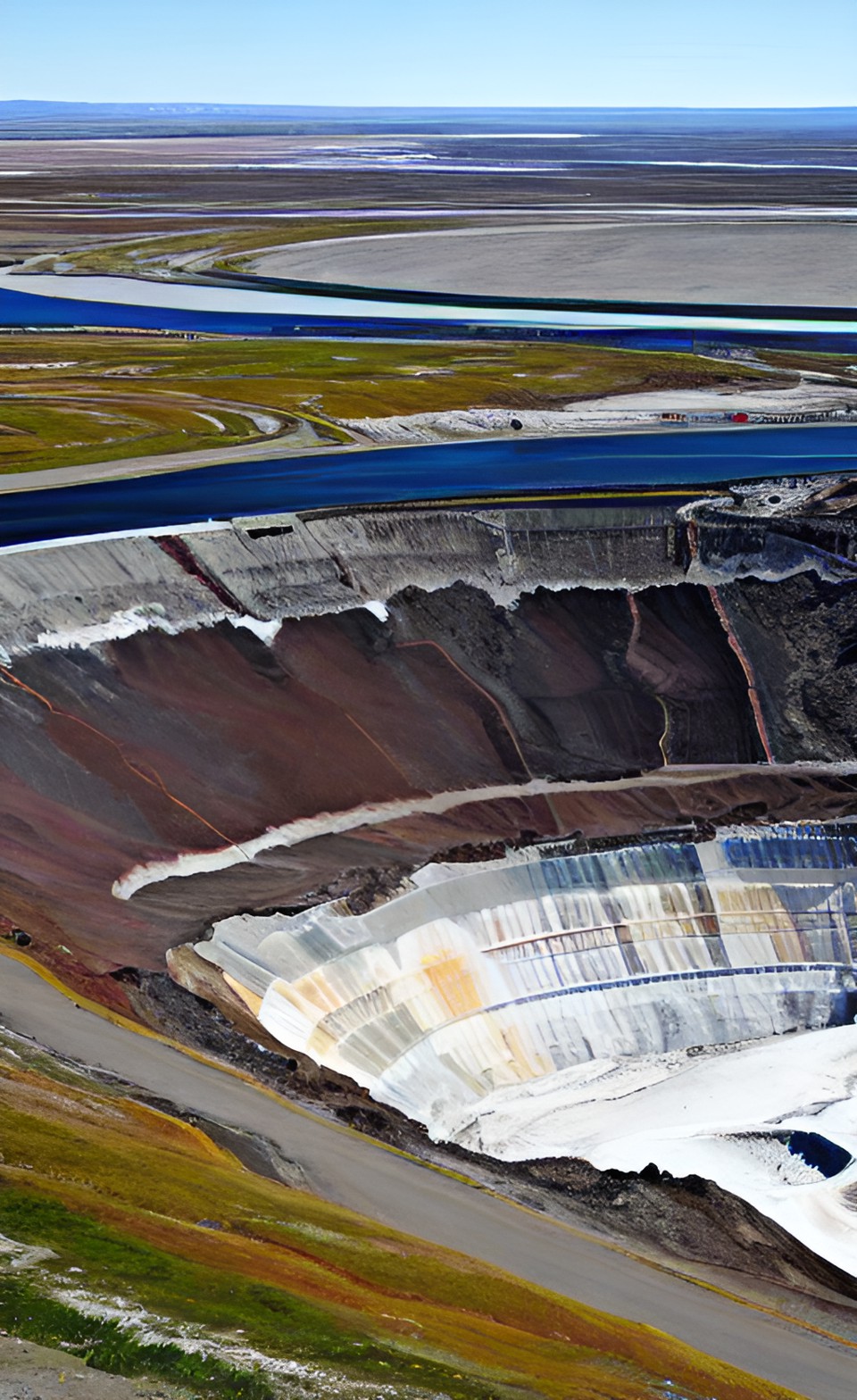- Air Homepage
- Alberta Air Quality
- Prevention of Air Pollution
- What Contributes to Air Pollution
Identifying what contributes to air pollution - Some of the underlying causes
Our province has come up with some comprehensive guidelines elucidating the diverse unusual sources and what contributes to air pollution. There are a lot of them, from storage tanks to piles of dirt. Also, take a look at the best reporting processes for mine faces and fleets.
Reporting complex non-point emissions - Did you know your storage tanks, dirt piles, and even haul trucks are part of your mandatory air emissions inventory? Keep your industrial operation compliant and your air clean by unlocking the detailed, step-by-step reporting guide Alberta requires.
 Inventory of emissions
Inventory of emissionsThis article explains data specifications, operational conditions, pollution controls, and location details for accurate reporting and environmental monitoring.
At the same time, you'll learn about regulatory compliance and environmental impact assessments. And how to maintain a sustainable and healthier environment by fostering responsible industrial operations.
The text summarizes Section 8 of the Alberta Annual Emissions Inventory Report (AEIR), which describes and quantifies these special sources.
In order to keep the environment healthy and sustainable, we need to understand and manage emissions from a variety of industrial sources. Follow these guidelines to ensure accurate reporting, regulatory compliance, and environmental monitoring.
Understand what contributes to air pollution and adopt these practices to foster responsible industrial operations by studying storage tanks, exposed storage piles, mine fleets, and tailings ponds. With this info, you can stay on top of environmental best practices.
Section 8.0 - Additional Information about Non-Point Sources (As outlined in AEIR Steps 8a - e)
As you may noticed, the AEIR Form requires extra data for non-point sources such as storage tanks and mining sites. Different types of non-point sources require different details depending on the operation.
8.1 - Tanks: what Contributes to Air Pollution
In an industrial operation's AEIR, storage tanks are collected and reported. It's important to provide details about storage tanks because they can emit substances into the air. How?
In industrial operations, storage tanks hold liquids or gases and leaks can release emissions. The AEIR Form specifies what information is needed for each storage tank, like its classification, operation, installation, decommissioning, location, and pollution control measures.
 Monitoring emissions from industrial operations
Monitoring emissions from industrial operationsNot all storage tanks need to be reported. Only worry about the ones that emit Schedule 1 or 2 substances into the atmosphere and have a capacity of at least 2,500 liters. List all storage tanks, review approval applications, and consider operational status to identify which tanks to report.
Tank descriptions, unique designations, types of tanks, materials stored, make, model, dimensions, throughput, and operational details are all needed. Report the tank's operating condition for the inventory year, its decommission date if applicable, and whether it's an approved future tank.
Also note these details regarding what contributes to air pollution. Vents, corrosion control, and leak detection methods should be explained. Unless already reported in another section of the AEIR, location, including longitude and latitude coordinates, are needed. And if not already reported, pollution control and emission recovery information is required.
For environmental monitoring and compliance, this data helps assess and manage emissions from storage tanks at industrial facilities.
8.2 - Identify exposed storage piles and enter the information
The term exposed storage pile refers to a collection of materials on-site that can release particulate matter and gaseous emissions. How are they important?
Materials stored outdoors at industrial sites are exposed storage piles. There's a chance they'll release dust, odours and gases. The AEIR Form collects data about each pile's classification, operation, installation, location, and pollution controls. Various industries, like biofuels, cement, chemicals, etc., report their storage piles here.
Requirements: Only outdoor storage piles need to be reported here. Emissions from enclosed storage piles should be reported separately.
- Fill out the form for future piles approved by environmental authorities.
- Table 54 in Appendix C lists the required fields for reporting storage piles.
- Provide a name and description for each exposed storage pile.
- Specify what's stored in each pile, e.g., wood waste.
- Link each storage pile to a non-point source.
- Describe each pile's dimensions, including height, length, width, area, and volume.
- Report when each storage pile started operating and how it's doing now.
- Choose from "Operating," "Temporarily shut-down," "Decommissioned," or "Not yet constructed/operating."
- Choose the condition that best describes how the storage pile operated during the year, like "Normal" or "Startup."
- If a pile is decommissioned, provide the date it was permanently shut down.
Future Storage Pile: Indicates if a storage pile is approved but not yet operational. If applicable, specify when future storage piles will start being used.
Report each storage pile's location using geographic coordinates as well as the elevation of the storage pile's base above sea level. To define the location and shape of the storage pile, provide latitude and longitude coordinates. If applicable, include information about pollution control measures for the storage piles.
Industrial sites need this information for environmental monitoring and compliance. Tracking emissions and environmental impact ensures responsible industrial operations.
8.3 - What's the Best way to Gather and Enter Mine Fleet Info?
What Are Mine Fleets? Groups of vehicles. Heavy haulers, as well as support vehicles, can be included. Engine exhaust can emit air pollutants from these fleets.
For AEIR Reporting:
AEIRs are used to collect data about mine fleets. This helps track and manage emissions from these mobile sources. So here's what you need to know about what contributes to air pollution.
 Heavy trucks in mine fleets
Heavy trucks in mine fleetsThis form is typically used in coal mining and oil sands mining.
There are different types of vehicles used in mining operations, like heavy haulers, excavators, etc. to be included.
Information about fuel: You'll need to provide details like the type of fuel used, total fuel consumption, and engine specs. In the inventory year, you'll indicate if these vehicles were operating, temporarily shut down, decommissioned, or not yet in operation.
Describe the conditions during start-up, turnaround, or if the vehicles were operating normally. You'll need to note the date if a fleet was permanently shut down. Or if there are future fleets that haven't started yet, mention when they'll start.
Providing geographic coordinates for the area where these vehicles operate is needed if location data isn't already reported elsewhere. Also, describe any pollution control measures these vehicles have.
Understanding and controlling emissions from industrial activities is crucial for meeting environmental regulations. It helps authorities track and manage emissions from these vehicles, which contributes to cleaner air.
8.4 - Here's how to Collect and Enter Mine Face and Tailings Pond Info.
What about faces of mines and quarries? Mine faces are where mining happens, and they can release air pollution.
Coal mining and oil sands mining use the AEIR Form to collect data about mine faces. Provide details like the mine face's name, unique designation, non-point source, and segment.
The segment data includes dimensions like height, length, width, and area.
Let the government know if the segment was running normally or if it was a start-up, turnaround, or upset during the reporting period. You shall also note when a segment was decommissioned.
 Tailings ponds and mine faces.
Tailings ponds and mine faces.Specify the start year for future mine face segments. Provide location information, like elevation and geographic coordinates.
If applicable, include pollution control details.
Ponds for tailings:
Mining waste goes into tailings ponds, and they can release fugitive emissions. They're usually found in coal mining and oil sands mining.
Similar to mine faces, you'll report tailings ponds that are operating or planned. Provide names, unique designations, associated non-point sources, and segment info. Describe the dimensions and status of any segments in the tailings pond.
Say whether it worked normally or not and note when a segment was decommissioned. Indicate the start year for future tailings ponds. And include information about the location, like elevation and coordinates if it's available. Don't forget details about pollution control if they exist.
Information like this helps authorities track and manage what contributes to air pollution from these areas. More about tailings ponds in mining operations is in this quick summary:
Description of the Tailings Pond: Mining waste is stored in tailings ponds, which can be a part of what contributes to air pollution. So, please include details about the pond, like its name, unique ID, and a short description. Also mention where the emissions come from.
The data includes the pond's total area, water surface area, dry pond area, total discharge volume, and percentage of diluent. In the Oil Sands, you'll need to specify the diluent and tailings contents.
There's also a need for operational info, like the start-up year, current status (operating, shutting down, etc.), and its condition during the reporting period. Provide the date of decommissioning if applicable.
Indicate if it's a tailings pond to become installed and operational at a later date and, if so, when it's expected to start. If you have location info, like elevation and coordinates, please include them.
Tailings pond pollution control details are important. Information like this helps track and manage emissions from these ponds.
Find out how Alberta industries track and report emissions.
Get AEIR Consulting Services Today!
With our expert guidance, you can function with your required AEIR submissions which can be a little complex. Calvin Consulting Group Ltd. demystifies Annual Emissions Inventory Reports for Alberta industries.
Our expert guidance on AEIR submissions, the Environmental Protection and Enhancement Act which requires industries to inventory and report emissions every year by September 30, and AEIR forms makes it easier for your team.
We help you fulfill data requirements for stacks and non-point sources like storage tanks, exposed piles, mine fleets, and open surfaces along with their environmental implications, ensuring your compliance with regulations..
Email us today to streamline your AEIR process and contribute to cleaner air in Alberta.

Our team can help you simplify classification, operation, location, and pollution control measures in order to provide accurate reporting.
Clean air is our Passion...Regulatory Compliance is our Business.
Who's causing air pollution?
We'll see how storage tanks, exposed piles and mischievous mine fleets contribute to this problem. How can industry ensure responsible industrial practices and compliance with environmental regulations? By understanding data requirements, reporting procedures, and environmental implications.
Do you have concerns about air pollution in your area??
Perhaps modelling air pollution will provide the answers to your question.
That is what I do on a full-time basis. Find out if it is necessary for your project.
Have your Say...
on the StuffintheAir facebook page
Other topics listed in these guides:
The Stuff-in-the-Air Site Map
And,
Thank you to my research and writing assistants, ChatGPT and WordTune, as well as Wombo and others for the images.
OpenAI's large-scale language generation model (and others provided by Google and Meta), helped generate this text. As soon as draft language is generated, the author reviews, edits, and revises it to their own liking and is responsible for the content.

New! Comments
Do you like what you see here? Please let us know in the box below.